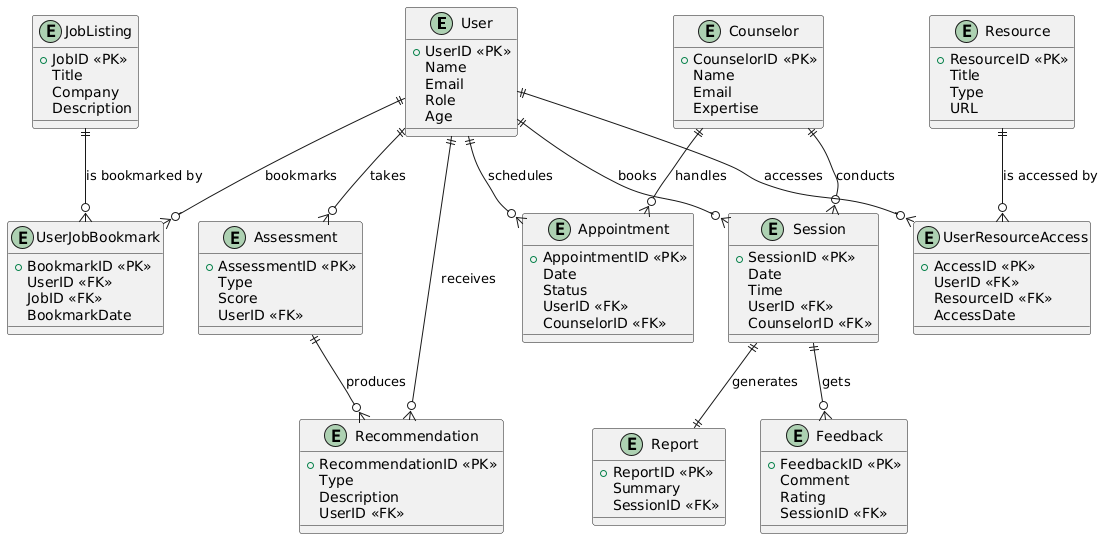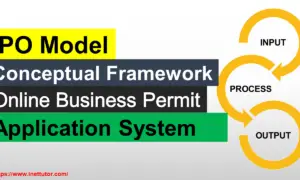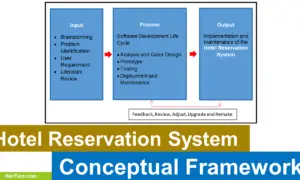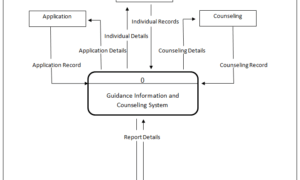Career Counseling Platform Entity Relationship Diagram
Introduction
Table of Contents
Career counseling platforms empower individuals to navigate their professional paths by connecting them with counselors, assessments, and job opportunities. These platforms manage complex data, including user profiles, session schedules, and career resources, requiring robust database systems to ensure seamless functionality and data integrity. Effective data management is critical to deliver personalized recommendations, track user progress, and maintain privacy, making database design a cornerstone of such systems.
An Entity Relationship Diagram (ERD) is a visual tool that maps a database’s structure, depicting entities (e.g., User, Session), their attributes (e.g., User ID, Session Date), and relationships (e.g., User books Session). ERDs serve as blueprints for organizing data, ensuring relationships are clear and constraints like uniqueness are enforced. For a career counseling platform, an ERD structures data to support features like appointment scheduling, assessment tracking, and job matching, enabling scalable, user-friendly systems.
This post aims to guide readers in understanding and creating an ERD for a career counseling platform, using a provided PlantUML script as a foundation. We’ll enhance the script to ensure all entities are interconnected, addressing the domain’s data needs. The target audience includes database designers building career platforms, developers creating counseling apps, students learning database modeling, and educators teaching data management. Whether you’re new to ERDs or applying them to real-world applications, this guide offers a clear, step-by-step approach.
We’ll explore the career counseling domain, recap ERD fundamentals, and design a comprehensive ERD with a revised PlantUML script that connects all entities (User, Counselor, Assessment, Session, Report, Feedback, Recommendation, JobListing, Appointment, Resource). By addressing challenges like personalization and scalability, this ERD will support a dynamic platform that empowers career growth. Let’s dive into designing a database that transforms professional journeys.
Overview of the Domain
A career counseling platform facilitates professional development by connecting users with counselors and resources. Key components include Users (job seekers or professionals), Counselors (career advisors), Assessments (skill or personality tests), Sessions (counseling meetings), Reports (session summaries), Feedback (user ratings), Recommendations (career suggestions), JobListings (employment opportunities), Appointments (scheduled meetings), and Resources (educational materials). Processes involve users taking assessments, booking appointments, attending sessions, receiving recommendations, and applying for jobs, while counselors provide guidance and resources enhance learning.
Data management challenges are significant. Personalization requires linking user data to tailored recommendations or assessment results. Scheduling demands precise appointment and session management to avoid conflicts. Privacy is critical for sensitive data like assessment scores or feedback comments. Scalability is needed to handle thousands of users and job listings. Tracking progress requires clear relationships between sessions, reports, and goals. ERDs address these by organizing entities, defining relationships, and enforcing constraints like unique IDs or mandatory fields.
Consider “CareerBoost,” a platform for recent graduates. Users take career assessments, schedule appointments with counselors, and attend sessions to discuss goals. They receive job recommendations, apply for listings, and access resume-building resources. Counselors generate reports, and users provide feedback. An ERD for CareerBoost would map Users, Sessions, and JobListings, ensuring the database supports personalization, secure storage, and efficient querying. By connecting all entities, the ERD enables a cohesive system where assessments inform recommendations, sessions generate reports, and resources support job applications, creating a seamless user experience.
Key Concepts of ER Diagrams
An Entity Relationship Diagram (ERD) is a core database design tool, representing entities, attributes, relationships, and keys. Entities (e.g., User, Counselor) are objects, shown as rectangles. Attributes (e.g., User ID, Session Date) are properties, listed within entities. Relationships (e.g., User books Session) describe interactions, depicted as lines. Primary keys (e.g., User ID) uniquely identify instances, while foreign keys (e.g., Session’s User ID) link entities.
In a career counseling platform, these concepts apply as follows:
- Entities: User, Counselor, Assessment, Session, Report, Feedback, Recommendation, JobListing, Appointment, Resource.
- Attributes: User has User ID (primary key), Name, Email. Session has Session ID (primary key), Date, User ID (foreign key).
- Relationships: User TAKES Assessment, Counselor CONDUCTS Session, Session HAS Report. Cardinality defines one-to-many (one User books many Sessions) or one-to-one (one Session has one Report).
- Keys: Primary keys ensure uniqueness; foreign keys maintain integrity.
For beginners, consider a simple ERD: the User entity with User ID (primary key), Name, Email, connected to Session via “BOOKS.” This illustrates user-session tracking. Tools like Lucidchart can visualize this, showing a rectangle for User and a line to Session.
These concepts ensure the ERD captures the platform’s needs, supporting scheduling, personalization, and feedback while maintaining data integrity. The revised ERD will connect all entities, ensuring a cohesive database.
Designing the ER Diagram for Career Counseling Platform
Designing an ERD for a career counseling platform involves a systematic approach to model its database, ensuring all entities are connected.
Step 1: Identify Entities
Entities are:
- User: Individuals seeking guidance.
- Counselor: Career advisors.
- Assessment: Skill or personality tests.
- Session: Counseling meetings.
- Report: Session summaries.
- Feedback: User ratings.
- Recommendation: Career suggestions.
- JobListing: Job opportunities.
- Appointment: Scheduled meetings.
- Resource: Educational materials.
Step 2: Define Attributes
Attributes include:
- User: User ID (primary key), Name, Email, Role, Age.
- Counselor: Counselor ID (primary key), Name, Email, Expertise.
- Assessment: Assessment ID (primary key), Type, Score, User ID (foreign key).
- Session: Session ID (primary key), Date, Time, User ID (foreign key), Counselor ID (foreign key).
- Report: Report ID (primary key), Summary, Session ID (foreign key).
- Feedback: Feedback ID (primary key), Comment, Rating, Session ID (foreign key).
- Recommendation: Recommendation ID (primary key), Type, Description, User ID (foreign key).
- JobListing: Job ID (primary key), Title, Company, Description.
- Appointment: Appointment ID (primary key), Date, Status, User ID (foreign key), Counselor ID (foreign key).
- Resource: Resource ID (primary key), Title, Type, URL.
Step 3: Establish Relationships
To ensure all entities are connected:
- User TAKES Assessment (one-to-many).
- User BOOKS Session (one-to-many).
- Counselor CONDUCTS Session (one-to-many).
- Session HAS Report (one-to-one).
- Session GETS Feedback (one-to-many).
- User RECEIVES Recommendation (one-to-many).
- User SCHEDULES Appointment (one-to-many).
- Counselor AVAILABLE_FOR Appointment (one-to-many).
- User APPLIES_FOR JobListing (many-to-many, via User_JobListing junction table).
- User ACCESSES Resource (one-to-many).
- Counselor PROVIDES Resource (one-to-many).
- Assessment INFORMS Recommendation (one-to-many).
Step 4: Specify Constraints
- Primary Keys: Ensure uniqueness (e.g., User ID).
- Foreign Keys: Maintain integrity (e.g., Session’s User ID).
- Cardinality: Define one-to-many (e.g., one User takes many Assessments) or many-to-many (e.g., User-JobListing).
Textual Description: The ERD centers on User and Counselor, linked to Session and Appointment. Users take Assessments, which inform Recommendations. Sessions generate Reports and Feedback. Users apply for JobListings and access Resources, which Counselors provide. The diagram below ensures all entities are connected.
ER Diagram Example
Below is a revised ERD for the career counseling platform, ensuring all entities (User, Counselor, Assessment, Session, Report, Feedback, Recommendation, JobListing, Appointment, Resource) are connected. The PlantUML script is updated to include new relationships and a junction table (User_JobListing) for the many-to-many User-JobListing relationship, with entity placement to avoid line intersections.

ER Diagram Walkthrough:
- User: Attributes: User ID (primary key), Name, Email, Role, Age. Connected to Assessment (“TAKES”), Session (“BOOKS”), Recommendation (“RECEIVES”), Appointment (“SCHEDULES”), Resource (“ACCESSES”), and User_JobListing (“APPLIES_FOR”).
- Counselor: Attributes: Counselor ID (primary key), Name, Email, Expertise. Linked to Session (“CONDUCTS”), Appointment (“AVAILABLE_FOR”), and Resource (“PROVIDES”).
- Assessment: Attributes: Assessment ID (primary key), Type, Score, User ID (foreign key). Connected to User and Recommendation (“INFORMS”).
- Session: Attributes: Session ID (primary key), Date, Time, User ID (foreign key), Counselor ID (foreign key). Linked to Report (“HAS”) and Feedback (“GETS”).
- Report: Attributes: Report ID (primary key), Summary, Session ID (foreign key). Connected to Session.
- Feedback: Attributes: Feedback ID (primary key), Comment, Rating, Session ID (foreign key). Linked to Session.
- Recommendation: Attributes: Recommendation ID (primary key), Type, Description, User ID (foreign key). Connected to User and Assessment.
- JobListing: Attributes: Job ID (primary key), Title, Company, Description. Linked to User_JobListing.
- Appointment: Attributes: Appointment ID (primary key), Date, Status, User ID (foreign key), Counselor ID (foreign key). Connected to User and Counselor.
- Resource: Attributes: Resource ID (primary key), Title, Type, URL. Linked to User and Counselor.
- User_JobListing: Junction table with User ID (foreign key) and Job ID (foreign key), resolving the many-to-many “APPLIES_FOR” relationship.
Domain-Specific Nuances:
- Personalization: Assessments inform Recommendations, tailoring career paths.
- Feedback Loop: Feedback ensures counselor quality.
- Resource Sharing: Counselors provide Resources, enhancing user learning.
The updated PlantUML script arranges entities to minimize line crossings, placing User_JobListing centrally and using hidden lines for layout control. The ERD supports a platform where users engage with all components, from assessments to job applications, ensuring a cohesive system.
PlantUML Script for Career Counseling Platform ERD
@startuml
entity User {
+UserID <<PK>>
Name
Email
Role
Age
}
entity Counselor {
+CounselorID <<PK>>
Name
Email
Expertise
}
entity Assessment {
+AssessmentID <<PK>>
Type
Score
UserID <<FK>>
}
entity Session {
+SessionID <<PK>>
Date
Time
UserID <<FK>>
CounselorID <<FK>>
}
entity Report {
+ReportID <<PK>>
Summary
SessionID <<FK>>
}
entity Feedback {
+FeedbackID <<PK>>
Comment
Rating
SessionID <<FK>>
}
entity Recommendation {
+RecommendationID <<PK>>
Type
Description
UserID <<FK>>
}
entity JobListing {
+JobID <<PK>>
Title
Company
Description
}
entity Appointment {
+AppointmentID <<PK>>
Date
Status
UserID <<FK>>
CounselorID <<FK>>
}
entity Resource {
+ResourceID <<PK>>
Title
Type
URL
}
entity UserJobBookmark {
+BookmarkID <<PK>>
UserID <<FK>>
JobID <<FK>>
BookmarkDate
}
entity UserResourceAccess {
+AccessID <<PK>>
UserID <<FK>>
ResourceID <<FK>>
AccessDate
}
User ||--o{ Assessment : "takes"
User ||--o{ Session : "books"
User ||--o{ Recommendation : "receives"
User ||--o{ Appointment : "schedules"
User ||--o{ UserJobBookmark : "bookmarks"
User ||--o{ UserResourceAccess : "accesses"
Counselor ||--o{ Session : "conducts"
Counselor ||--o{ Appointment : "handles"
Session ||--|| Report : "generates"
Session ||--o{ Feedback : "gets"
Assessment ||--o{ Recommendation : "produces"
JobListing ||--o{ UserJobBookmark : "is bookmarked by"
Resource ||--o{ UserResourceAccess : "is accessed by"
@enduml
Changes Made:
- Added User_JobListing junction table for the many-to-many User-JobListing relationship (“APPLIES_FOR”).
- Connected Resource to User (“ACCESSES”) and Counselor (“PROVIDES”).
- Linked Assessment to Recommendation (“INFORMS”) to ensure all entities are interconnected.
- Adjusted layout with hidden lines to minimize line intersections, placing User_JobListing centrally.
Best Practices for Career Counseling Platform ER Diagrams
Designing effective ERDs for career counseling platforms requires careful planning to ensure clarity, scalability, and user-centric functionality. Here are best practices:
- Normalize Data: Eliminate redundancy by normalizing tables. Store User details in one table, not repeatedly in Session or Assessment, to save space and ensure consistency.
- Protect Privacy: Safeguard sensitive data like Assessment Score or Feedback Comment. Use foreign keys (e.g., User ID) instead of personal details in related tables.
- Define Clear Relationships: Ensure all entities are connected logically. For example, link Assessment to Recommendation to support personalized suggestions.
- Use Descriptive Naming: Adopt clear names like “Recommendation_Type” to improve readability and avoid confusion.
- Enforce Constraints: Use primary keys (e.g., Session ID) and foreign keys (e.g., Report’s Session ID) to prevent orphaned records.
- Plan for Scalability: Index attributes like JobListing Title for fast searches and design for high user volumes.
- Support Personalization: Include entities like Recommendation and Assessment to enable tailored career paths.
- Validate with Stakeholders: Collaborate with counselors and users to ensure the ERD meets needs like scheduling or job matching.
Common Pitfalls to Avoid:
- Overcomplicating Relationships: Avoid unnecessary links, like directly connecting Counselor to JobListing.
- Ignoring Scheduling: Ensure Appointment’s Date and Status prevent conflicts.
- Neglecting Feedback: Omit Feedback, and you lose quality control.
Recommended Tools:
- MySQL Workbench: Generates SQL from ERDs.
- Lucidchart: Collaborative for teams.
- Draw.io: Free, cloud-integrated.
- ERDPlus: Simple, web-based.
These practices ensure a robust ERD that supports a scalable, personalized career counseling platform.
Real-World Applications
The ERD for a career counseling platform translates into a real-world database powering job platforms, counseling apps, or university career services. It structures data to support scheduling, personalization, and job matching, making it essential for developers and organizations.
The database enables:
- Scheduling: Appointment and Session entities ensure conflict-free bookings with Date and Time attributes.
- Personalization: Assessment and Recommendation entities tailor job or career suggestions.
- Job Matching: JobListing and User_JobListing entities connect users to opportunities.
- Quality Control: Feedback and Report entities improve counselor performance.
Industries and Tools:
- Career Services: Universities like Stanford use similar databases for student advising. This ERD would structure their data.
- Job Platforms: Indeed or Monster manage user profiles and jobs, with ERDs guiding design.
- Counseling Apps: Platforms like BetterUp track sessions and goals using ERD-based databases.
- HR Tools: Workday’s career modules rely on structured databases.
Case Study Example: “PathFinder,” a counseling app for professionals, uses this ERD. Users take assessments, book appointments, and attend sessions with counselors who generate reports. They receive job recommendations, apply for listings, and access resources like interview guides. Feedback ensures counselor quality. The database, built from the ERD, supports real-time queries (e.g., available appointments) and integrates with job board APIs. The ERD’s interconnected entities enable PathFinder to scale, delivering personalized, secure services that transform careers.
Conclusion
Entity Relationship Diagrams are vital for designing databases for career counseling platforms, simplifying data modeling and ensuring scalability, personalization, and efficiency. This post explored the domain, detailing entities like User, Counselor, and JobListing, and addressing challenges like scheduling and privacy. We reviewed ERD fundamentals and enhanced a provided PlantUML script to connect all entities—User, Counselor, Assessment, Session, Report, Feedback, Recommendation, JobListing, Appointment, Resource—via relationships like “APPLIES_FOR” and “PROVIDES.” Best practices, such as normalization and privacy protection, ensure a practical ERD, while real-world applications highlight its role in job platforms and counseling apps.
Key takeaways include the need for clear relationships to support features like personalized recommendations and job matching. The ERD’s interconnected structure, with entities like Assessment informing Recommendation and User_JobListing enabling job applications, ensures a cohesive system. This design supports efficient querying, data integrity, and user satisfaction, making it a powerful tool for developers, designers, and educators.
Try creating your own ERD with the revised PlantUML script using Draw.io or MySQL Workbench. Experiment with related domains, like mentorship or education platforms, to expand your skills. Share your thoughts in the comments—how did the interconnected design impact your understanding? For further learning, explore our next post on database optimization or visit x.ai for data solution insights. Check out Lucidchart tutorials or Coursera’s database courses for more resources.
This guide equips you to build a database that empowers career growth. Whether you’re a student or professional, start modeling your career counseling platform today. Your feedback drives our content—tell us what database topics you want next!
You may visit our Facebook page for more information, inquiries, and comments. Please subscribe also to our YouTube Channel to receive free capstone projects resources and computer programming tutorials.
Hire our team to do the project.


